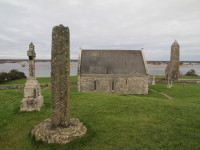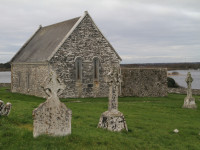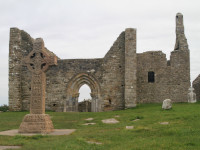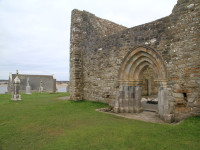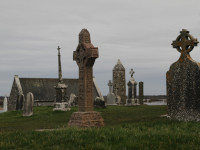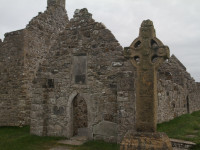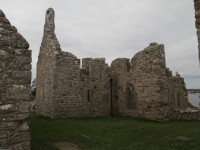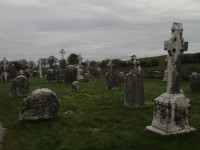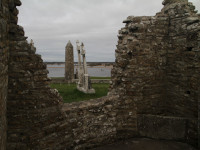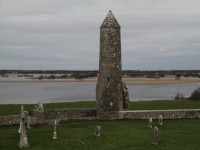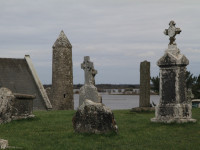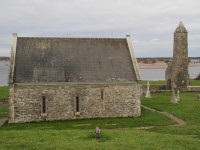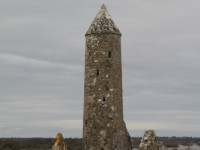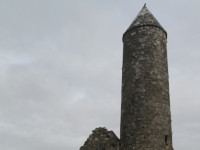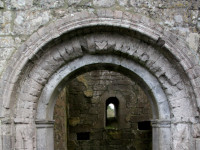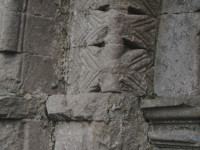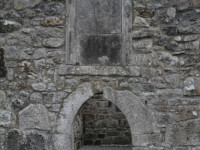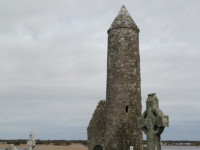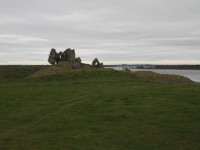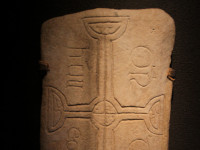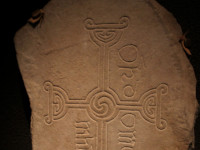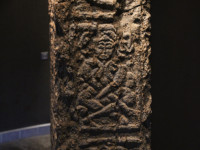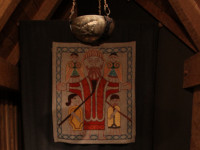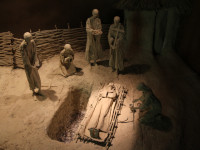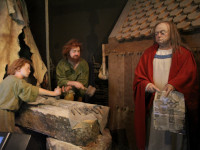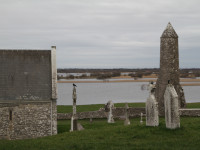
Clonmacnoise
Midlands Ireland | County Offaly
Clonmacnoise is one of Ireland's most iconic monastic sites. Is situated on the banks of River Shannon about 7km northeast of Shannonbridge, in County Offaly. The first early Christian monastery was founded here by Saint Ciarán, in the middle of the 6th century. Clonmacnoise was located at the crossroads of two very important communication routes of medieval Ireland, the River Shannon and "The Great Way" (Irish: Slí Mór), the ancient roadway connecting the west and the east of the country. The location on the borders of two early medieval Irish kingdoms, Connacht and Mide (Meath), was also important. The monks of Clonmacnoise benefited from good relations to both of the ruling dynasties. The convenient location also had bad sides. The monastery was plundered and burnt many times, mostly by rival Irish kingdoms like Munster, but also by Vikings, and later by Normans. In its heyday, the Clonmacnoise was a great centre of craft and learning, and many excellent manuscripts, including the 11th-century Annals of Tighernach and 12th century Book of the Dun Cow, were written here. One of the finest Irish High Crosses, the Cross of the Scriptures (also known as King Flann's Cross) was carved here in the 10th century. The main building, the cathedral, is situated in the center of the enclosure. Its construction began around 909 by King Flann Sinna. During its operation, the cathedral was modernized, and the Gothic doorway was added in the 15th century. Located on the east end of the cathedral Temple Ciarán is the smallest church on the site. It was built between the 8th and 9th century. On the southeast side of the cathedral is situated the Temple Melaghlin. It was built c. 1200, in late Romanesque/Gothic transitional style, which is unique in Ireland. Is believed that here was the scriptorium, where the manuscripts were created. On the south side of the cathedral, there is located Temple Dowling, built in the pre-romanesque style in the 10th century. In the 17th century, the church was extended at the east end and a new roof was added by Edmund Dowling, from whom the church gets its name. On the northeast of the cathedral, there was Temple Kelly. All that remains of this church is just the foundation. One of the most unusual churches in Clonmacnoise, the Temple Finghin, is located at the northern edge of the monastic site. It was built between 1160-70 in Hiberno-Romanesque style. Its unique feature is the round tower which was built into the south wall. It is possibly the earliest example of this kind in Ireland. There is one more round tower, which stands in the northwest corner in the monastic complex of Clonmacnoise. It has 5.62 metres in diameter and is 19.3 metres tall, which is 2/3 of its original height. In 1135, it was struck by lightning which knocked off the top of the tower. The Temple Connor is located near the northern boundary, nearby the Temple Finghin. It was built in the 11th century by Cathal O' Connor. It has some transitional features dating to the 12th century. From the 18th century until today, it serves as an Anglican Church (the Church of Ireland). in the second decade of the 20th century, significant restoration works were carried out and internal space was remodelled. The real hidden gem, the Nuns' Church is located about 500m east outside the main complex, on the Pilgrim's Path. It was built in 1167 for Derbforgaill, the wife of Tiernan O’Rourke (Irish: Tighearnán Mór Ua Ruairc), the King of Breifne. The Nuns' Church It is one of the finest examples of Hiberno-Romanesque architecture in Ireland. The Interpretative Center of Clomnacloise presents the history of the monastery complex and the surrounding area. The exhibitions show the archaeological artefacts, including the original High Crosses. There are also tea rooms, gift shop and Fáilte Ireland tourist office.
- OPENING HOURS :
- Open all year
- Daily: 10am-5pm
- Closed 25th & 26th December
- Open all year
- TICKET PRICES :
- Adult: €4
- Child/Student: €2
- Group/Senior : €3.00
- Family: €10
- CONTACT :
- Phone: +353(0)90 9674195
- Email:
- clonmacnoise@opw.ie
- clonmacnoisebookings@opw.ie
- Website: www.heritageireland.ie/clonmacnoise/
- COORDINATES :
- 53.326325
- -7.986292
- CAR PARK :
- Yes
Photos from Clonmacnoise
